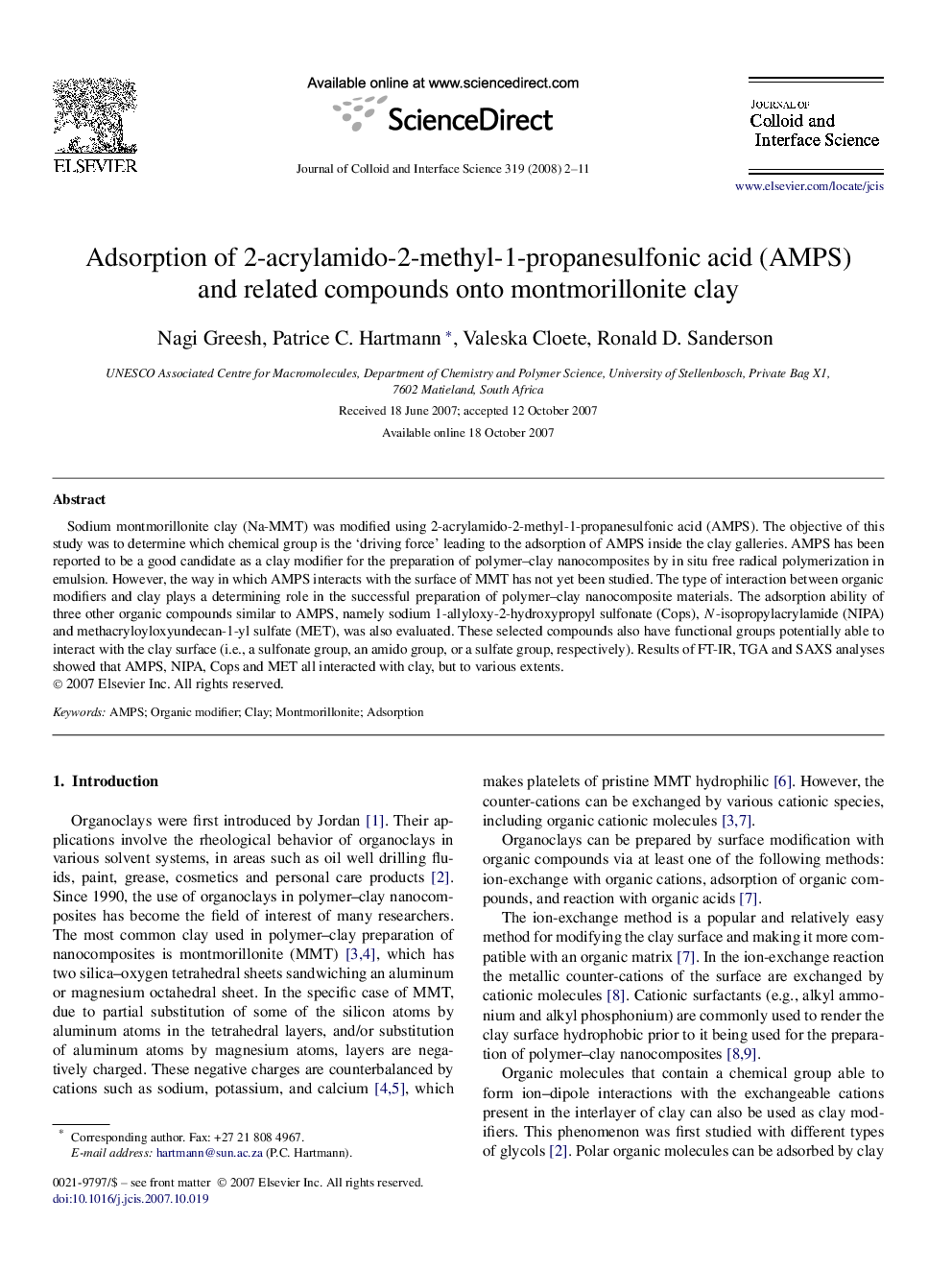| Article ID | Journal | Published Year | Pages | File Type |
|---|---|---|---|---|
| 611443 | Journal of Colloid and Interface Science | 2008 | 10 Pages |
Sodium montmorillonite clay (Na-MMT) was modified using 2-acrylamido-2-methyl-1-propanesulfonic acid (AMPS). The objective of this study was to determine which chemical group is the ‘driving force’ leading to the adsorption of AMPS inside the clay galleries. AMPS has been reported to be a good candidate as a clay modifier for the preparation of polymer–clay nanocomposites by in situ free radical polymerization in emulsion. However, the way in which AMPS interacts with the surface of MMT has not yet been studied. The type of interaction between organic modifiers and clay plays a determining role in the successful preparation of polymer–clay nanocomposite materials. The adsorption ability of three other organic compounds similar to AMPS, namely sodium 1-allyloxy-2-hydroxypropyl sulfonate (Cops), N-isopropylacrylamide (NIPA) and methacryloyloxyundecan-1-yl sulfate (MET), was also evaluated. These selected compounds also have functional groups potentially able to interact with the clay surface (i.e., a sulfonate group, an amido group, or a sulfate group, respectively). Results of FT-IR, TGA and SAXS analyses showed that AMPS, NIPA, Cops and MET all interacted with clay, but to various extents.
Graphical abstractFigure optionsDownload full-size imageDownload as PowerPoint slide
